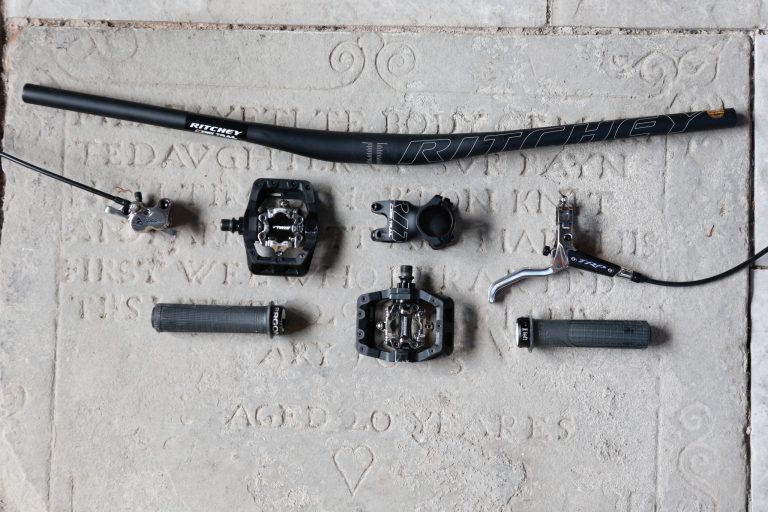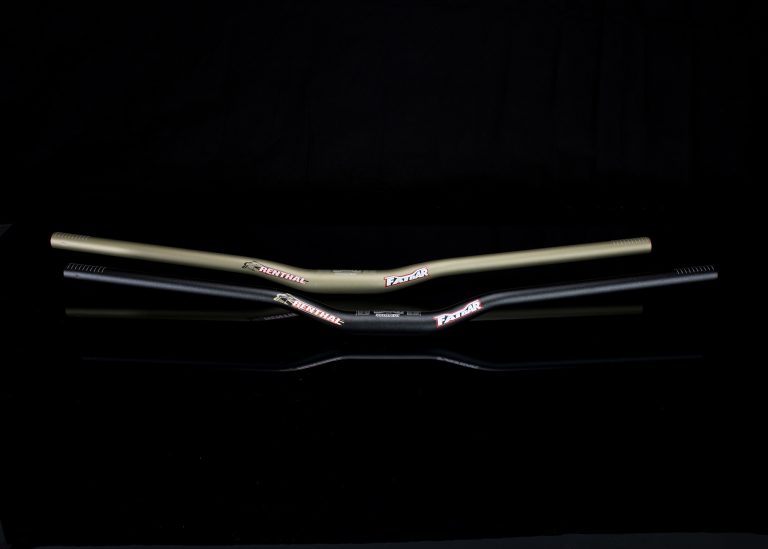
German based company Solid have made a new 27.5” (650b to some) downhill bike and it’s good…
Taken from Dirt issue 144, February 2014
The first look was now a year ago and we were massively impressed. I remember opening a box with a 150mm enduro bike in it weighing in at 35lb, cables everywhere and more money, the Solid was also in the van on the same day. I opened it and the courier had bent the rear wheel and disc, it wasn’t looking good and to be honest I wasn’t really feeling it. After the first hundred yards I sniffed it was actually a really well balanced bike and as I dived into the first rock section was instantly inspired by the silence, excellent damping and pace that this pretty cheap bike offered. I subsequently brought in some big performers for comparison and it still held its own.
Peter, Solids owner is an absolute maniac, totally obsessed with getting it right and he’s done a great job here, but I simply cannot believe he’s putting these out at €3333 EUR. That’s twenty six twenty eight in pounds sterling. More than that he’s now bolted in a Cane Creek DB and Boxxer, although there was nothing wrong with the Vivid Air/Manitou Dorado combination we first tested the bike on. The component spec is reliable and the overall weight of the bike in these photos is 37.02lb. This is an exceptional offering and is one of the ten downhill bikes featured in the forthcoming Dirt 100. Here’s the full test from the mag…
It appears that the rocket ship to Mars has been pirated by a bunch of space cadets riddled with a dose of indecision. Or maybe the world of downhill racing has caught a mass infection of Luddism. I have never seen so many young men stuck in their ways. Cool mind you.
German based company Solid have made a new 27.5” (650b to some) downhill bike and it’s good, but still they cannot seem to shake off old fashioned ways by offering the bike with a 26” wheel option, from what I can only imagine is a safety net of doubt. “The advantages of the new wheel size we will test in the future with our race team.” Lads seriously, you should have worked this out by now, it’s simply putting a king size question mark into the buyer’s head. Is it better or isn’t it? You tell me.
Click through to view the full gallery before reading on…
My biggest issue with a bike designed for several wheels sizes is obvious. In a world where ‘optimized’ isn’t just overused but overdosed, then clearly you are providing a bike that is going to be compromised in one wheel size or another. Is this bike designed for 26 or 27.5?
But hey lets not worry about wheel size, how about size to start with? S/M, M/L or L/XL. I mean seriously, is this like frame sizes from small and a half through to large and a half or something? I almost like the idea given the ridiculous amount of diversity in mountainbike sizing and to be fair this bike relative to others feels like a good large. Its actual size is M/L.
To make comparisons, the Strike is coming in with a 1264mm wheelbase and 448 chainstay, 343mm bottom bracket and 62º head angle for the extra large. A Trek Session is 1230/441/356/64 in a comparable XL size. Or should I say incomparable – the Strike is a BIG bike before you start counting wheel sizes.
But lets not make a fuss, as a M/L this is a good size. And assuming the Strike is Solid’s flagship bike then it is considerably longer, lower and a shade slacker than their second their Mission series 26”.
In terms of componentry the bike sees a fair amount of Reverse hardware (Solid’s own–brand products). This includes bar, stem, hubs, chainguide, crank, bottom bracket, headset, rims, seatclamp, seatpost. It’s nothing stunning but at £3300 it is not a bad offering. On paper at least I see a better spec’d YT for significantly less money. However there are no 27.5 options from direct sales just yet, for this you must go Morewood, KHS or the beautiful Intense 951, the latter of which has similar geometry to the Solid.
VERDICTIt was a with a belly load of preconception that I drove to the Solid Strike test. The bike was late for starters, also it had been damaged in transit for, the Reverse components never really lit my fire, it appeared heavy and most of all I failed to understand the indecision over whether it was faster or not by the manufacturer.
The scale and rule quickly cleared up some of my doubt as it came in long, low and ridiculously light – 35.03lb without pedals! Out of the van the bike feels slightly too slack on the flat, meaning that the riding position and steering lack precision. The shape and size for a medium/large is reasonable and the power transfer average for a light downhill bike. A Trek Session might just smoke it in a head to head pedal, and speed out of tighter stuff feels a little laboured largely because of its slackness. But this bike is not made for pedaling too much, in fact this bike hasn’t got time to be hanging around, it needs to be involved.
On the hill I was taken aback by the pace of the Strike… really taken aback. The poise and the way it pushes across breakers was impressive, it ignores root, skips across rock and keeps its shape, always wanting to press on. Having spent the month on 27.5”x160mm bikes that will always be out of their depth in troubled waters because of lack of travel… well… that doesn’t affect bikes with 200mm. But most importantly of all I think the effect of the larger wheel size is more pronounced on downhill bikes and you realize much quicker than on 26” that you ‘the rider’ are the limiting factor.
The only way to come to any conclusion was to put it to the test and bring out the clock. The feeling was good, the suspension simple and efficient, supportive and quick. The Manitou Dorado up front was a cracker, the rear air RockShox Vivid never missed a beat and sat in the correct place with superb mid–stroke understandability. This bike is a great bike irrespective of wheel size, it’s a bike that’s fun to ride, can be moved around in an instant (particularly at speed), it’s a quick, quick bike that’s for sure.
It asks many questions, I seriously wonder about carbon bikes that weigh more and are more vulnerable, I worry about the price, about the idea of the real value of ‘bling’ kit. Reverse components, look they don’t dazzle you but this bike works.
The clock came out, a seriously high–end 26” downhill bike was rolled into town and the runs got smashed out. It was close. Closer than I thought. The sensation during the timed runs was that the 27.5 Strike was significantly faster than the 26 bike, the poise and control over really rough ground felt much better. Damping on both bikes was top end and only the slower steering on the Strike stood out. We narrowed the terrain down to a minute of tougher terrain and it was here that we found the £3300 aluminium Strike to be on average 0.5 to 1.0 second faster. It doesn’t sound like much, but when you consider the top ten riders at a World Cup race can often be separated by 2–3 seconds over 4 minutes then you get the idea.
AND?This is a great bike. Even if Solid remain slightly on the fence the Strike is a fact on the ground. It’s light, it’s aluminium (which will possibly be less liable to breakages), it’s a good price, it’s fast, and if all else fails – it’s a fun bike to ride. More than this, it definitely produces less fatigue on the rider, and this can benefit both the racer and non–racer alike.
Solid Strike €3999: Solid Bikes
SPECFrame Solid Strike 27.5
Fork Manitou Dorado
Shock RockShox Vivid Air
Cassette SRAM PG 1050
Derailleur SRAM X0
Chain SRAM PC 1031
Chainguide Reverse
Crank Reverse Legend
Disc Avid Code R
Bottom Bracket Reverse
Bar Reverse 810DH
Headset Reverse Twister
Hubs Reverse EVO 9
Spokes Sapim
Rims Reverse 928
Seat/post Reverse
Stem Reverse
Tyres Schwalbe Magic Mary





